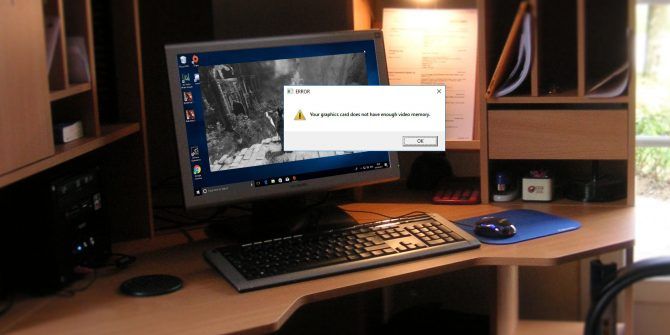You can find many guides that explain how you can turn on and off your PC remotely. However, most of them seem to treat the subject as if you’ll be managing a massive network of computers. Others dive too deep into technicalities, turning what should be a simple matter into an ultra-complex affair.
To help you out with the process, and to keep it as simple as possible, we’ve made this guide that teaches you how to remotely turn a PC on or off.
The Magic of Wake-on-LAN
Waking up a PC remotely doesn’t rely on magic. It’s possible thanks to the Wake-on-LAN networking standard, which is supported by most Ethernet connections.
When enabled, Wake-on-LAN allows one computer—or even your smartphone—to send a magic packet, the equivalent of an “ON signal”, to another PC on the same local network.
1. Set Up the Remote PC
Although most modern Ethernet network adapters support Wake-on-LAN, many don’t have the feature enabled by default. For a PC to be able to spring to action when it receives a magic packet, you might have to enable the feature in two seemingly unrelated places:
- In your PC’s BIOS/UEFI menu.
- In your network adapter’s settings within Windows 10.
Unfortunately, we can’t provide specific instructions for enabling Wake-on-LAN in your PC’s BIOS/UEFI menu. The option’s placement depends on the motherboard’s manufacturer. Thus, you’ll have to check your motherboard’s manual for more information. Usually, though, you’ll find it under the networking or power-related options.
After you’ve ensured Wake-on-LAN is enabled in your target PC’s BIOS/UEFI, boot into your Windows installation as usual. Open the Device Manager. If you’re on Windows 10, you can press Windows key + X and run it from the OS’s administrative tools quick menu. Alternatively, you can press the Windows key or click on the Start menu and start typing “Device Manager” to find it.
-
Expand the Network adapters category and double-click on your network adapter (or right-click on it and choose Properties). Move to the Advanced tab and check the entries under Property. Locate the entry for Wake on Magic Packet and enable it.
-
While still viewing your network adapter’s properties, move to the Power Management tab. There, ensure that both Allow this device to wake the computer and Only allow a magic packet to wake the computer are enabled.
-
Finally, to wake it up remotely, you’ll need this PC’s IP address. If you don’t know it, you can find it by pressing Windows key + R, typing “cmd”, then pressing Enter to run Command Prompt. Type “ipconfig” (without the quotation marks) in Command Prompt and press Enter to run the command. The address you need will be reported as IPv4 Address.
You can now turn off this PC and return to your primary one.
2. Grab WakeMeOnLan
As we’ll see, creating a shutdown shortcut on our desktop for our remote PC is easy and doable with Windows’ default tools. However, to turn a remote PC on, you need a way to send to it the aforementioned magic packet. Many remote control solutions can wake your PC this way.
For this article, though, we don’t want to fully remote control our PC. We only wish to access its storage as quickly and simply as possible. Thus, it’s easier to use NirSoft’s free WakeMeOnLan tool.
-
Download WakeMeOnLan from its official site.
-
The tool works as a portable app and doesn’t need installation. However, it comes in a ZIP archive. To use it, create a folder where you’d like to “install it” from where you will run it in the future. Then, extract the contents of the downloaded archive there. Remember (or copy to the clipboard) the path to that folder.
With everything set up, you can now create the actual shortcuts that will turn on and off your remote PC.
3. Create the On/Off Shortcuts
WakeMeOnLan offers a proper GUI but also supports command-line flags. We’ll exploit this feature to use WakeMeOnLan as the secret sauce behind a shortcut that will turn on a remote PC.
-
Right-click on a blank spot on your desktop and choose New > Shortcut from the menu that pops up.
-
Enter the full path to WakeMeOnLAN’s executable file (that we suggested you note down or copy to the clipboard earlier) in the field under Type the location of the item. Alternatively, you can click on the Browse button on the right, then find and choose WakeMeOnLAN’s executable from the requester that appears. Leave a blank space after the executable, and type “/wakeup YOUR_REMOTE_PC’s_IP” (without the quotation marks). Replace “YOUR_REMOTE_PC’s_IP” with the IP address you noted when you ran ipconfig on your remote PC.
-
Enter an appropriate name for your new shortcut. We used a straightforward “BlackBox_ON”, where “BlackBox” was the name of our remote PC. Click on Finish and your first icon will be ready to use.
-
Create a second icon as before. For this one, you can use the Windows’ native “shutdown” command instead of a third-party tool. So, instead of entering a path to an executable, type “shutdown /s /m REMOTE_PC’s_NAME” (without the quotation marks). In our case, our remote PC was called “BlackBox”, so our command was “shutdown /s /m blackbox”.
-
Enter an appropriate name for this shortcut as well—we used a wholly unoriginal “BlackBox_OFF”. Finally, click on Finish to create your Remote-OFF shortcut.
Your shortcuts are now ready to use.
Get In, Transfer, Get Out!
Despite being created with perfectly understandable, standard technology, using those two shortcuts indeed feels like magic.
With them, you don’t have to turn to complicated solutions or get up to manually press a power button on another computer to turn it on. Instead, you can double-click on a “power on” shortcut on your desktop and hear your remote PC instantly spring to action.
Then, fire up your favorite file manager, visit your remote PC’s shared folders, and copy and move files to and from it.
Finally, double-click on the “power off” shortcut and that’s it. No harder than using a typical home appliance. There goes another excuse to get off our chairs!
Read Next
About The Author








